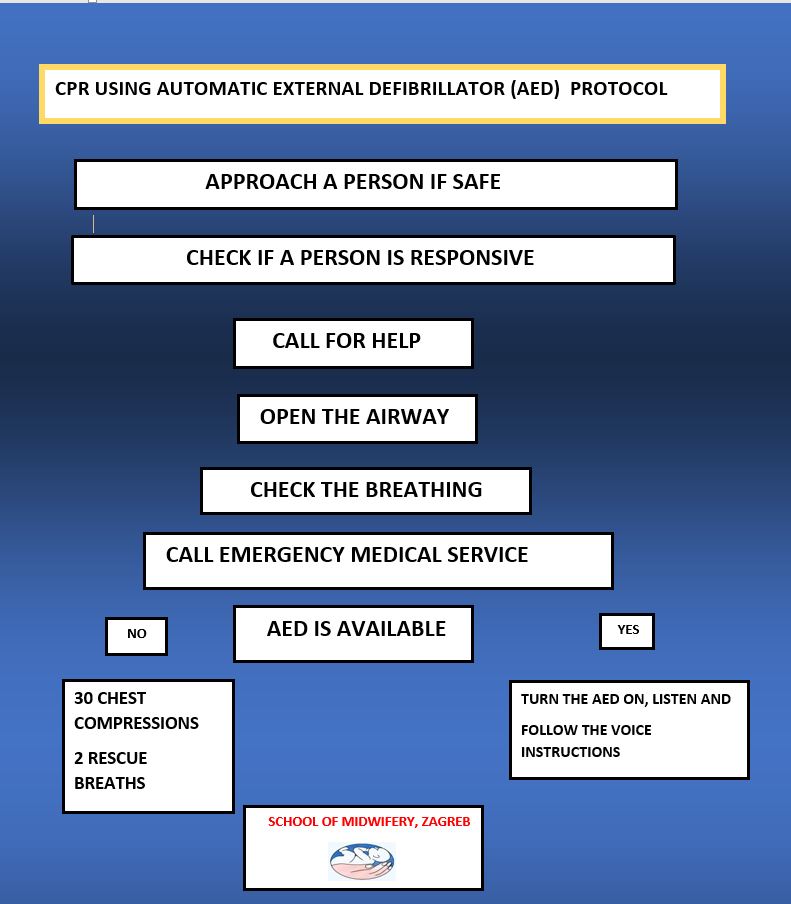Everyday First Aid for someone who's
Unresponsive and nonbreathing
This is a video of CIPFP Ciutat de l'Aprenent, a VET (Vocational Education Technician) centre in Valencia (Spain). It has been created by EMT (Emergency Medical Technician) students of the 1st year, 31Ñ group, the year 2017-2018. Teachers: Mª Mercedes Martínez & Carmen Súarez. Co-coordinator: Alicia Sánchez
QUESTIONS about first aid for someone who is unresponsive and not breathing?
- Why do I have to tilt their head back to check for breathing?
- What should I do if I hear noisy or irregular breathing?
- What should I do if I’m on my own when I find someone unresponsive and not breathing?
- What are chest compressions?
- How long should I do chest compressions for?
- If I press too hard during chest compressions, could I break their ribs?
- What if I make a mistake and do chest compressions but the person is still breathing?
- Am I supposed to give rescue breaths too?
- Will I restart the heart if I give chest compressions?
ANSWERS
- When someone is unresponsive, their tongue can fall backwards and block their airway. Tilting their head backwards opens the airway by pulling the tongue forward.
- Sometimes when a person is unresponsive their breathing may become noisy or irregular, or they may be gasping. This is usually a sign that their heart is not working properly and you should start chest compressions.
- If you are on your own, call 112 before you start chest compressions.
- Chest compressions are where you place your hands in the centre of the chest and repeatedly press downwards and release at a regular rate to help pump the blood around the body.
- Keep going until help arrives. If there is someone else who can help, change over every minute or two. Try to keep doing chest compressions with as little interruption as possible when you change over.
- You might, but try not to worry. Your priority is to keep the blood circulating. A damaged rib will mend, but if you don’t do chest compressions their chances of survival are much lower.
- It’s not ideal but don’t worry. There’s no evidence to suggest you will cause any serious damage.
- If you feel able to, combine chest compressions with breathing into their mouth or nose. Breathing into their mouth or nose tops up the oxygen in their lungs. The combination of continuous cycles of 30 chest compressions followed by two breaths is called CPR (cardiopulmonary resuscitation).
- The chance of restarting the heart by chest compressions alone is very small. Usually, a heart needs an electric shock from an automated external defibrillator (AED) to restart.
Unresponsive and nonbreathing when an AED is available
Video conducted by the School of Midwifery students

A Talk with an expert - Mr. Igor Bićanić MD, Head of the First Aid Program of the Red Cross Zagreb gave us answers about helping someone who is unresponsive and not breathing when an AED is available
QUESTIONS about helping someone who is unresponsive and not breathing when an AED is available?
- What is an automated external defibrillator (AED)?
- Who can use an AED?
- Will I restart the person’s heart if I use an AED?
- If I am alone, should I leave the person to get an AED?
- If an AED isn’t immediately available, how do I help an unresponsive and not breathing person?
- How easy are AEDs to use?
- Can I use an automated external defibrillator on a baby or child?
ANSWERS
- An AED is a machine that can be used to shock the heart back into normal rhythm. When you open an AED case it will give you full instructions on what you should do.
- Anyone can use an AED. The AED will only shock someone if needed – it would never shock a healthy heart. The AED will give you instructions on how to help someone if a shock is not needed.
- If the AED delivers a shock to the person, it doesn’t always mean that their heart will restart. The machine will detect whether the person’s heart has restarted and give you further instructions if it hasn’t. This means you may need to resume chest compressions. Continue to follow the AED voice prompts until help arrives.
- No, call 112 and start chest compressions. Your priority is to pump blood around the person’s body until help arrives. Call out for help and if another person arrives before the ambulance, tell them to get an AED as quickly as possible.
- You need to act in the same way: call 112 and give chest compressions until help arrives.
- An AED can be used on anyone aged over a year old, but adaptations are needed when using an AED on a child.
- For children aged one to eight years old, paediatric pads should be used. If paediatric pads are not available, use the standard ones, but place one pad in the centre of the child’s chest and the other one in the centre of the child’s back. Never use an AED on a baby under one year old.